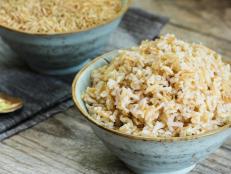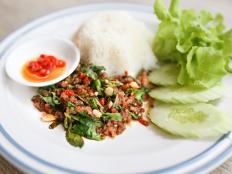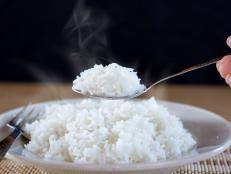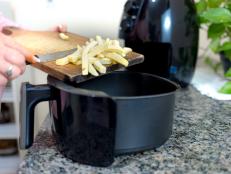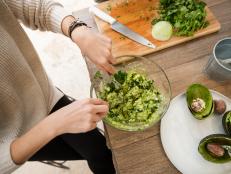How to Use a Rice Cooker to Make Perfect Rice Every Single Time
I've been using a rice cooker since I was a kid; here's what I've learned.

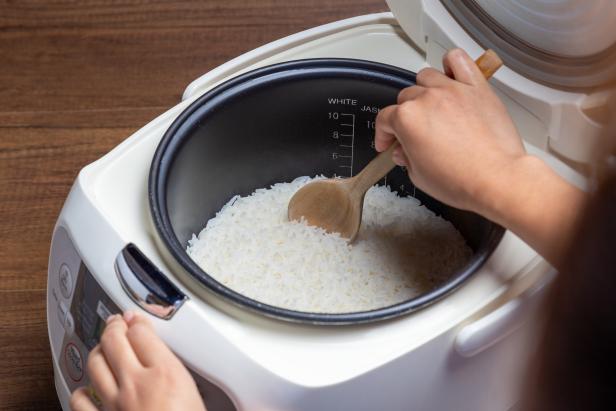
KTStock/Getty Images
When it comes to cooking rice, it feels like there are as many methods as there are varieties. Some home cooks opt for the traditional stovetop, while others prefer the convenience of the microwave. Then, there’s the group that swears by their trusty rice cooker.
What Is a Rice Cooker?
The small appliance is the go-to method for many whom enjoy rice frequently: it makes fluffy, perfectly cooked, never-burnt rice every time. Using it is simple enough. Pour in rice and water, close the lid and hit a button.
But how exactly does this nifty machine work? It all comes down to temperature. A rice cooker works by using a combination of heat and moisture. When you add rice and water to the inner cooking bowl and hit the start button, the cooker's heating element kicks into action, bringing the water to a boil. As the water heats up, it gets absorbed by the rice, softening the grains. Once the rice absorbs all the water, the temperature inside the pot will start to rise beyond 212 F. Sensors in the cooker detect this and automatically shut off or switch to a low “Keep Warm” mode. Most rice cookers take between 20 to 30 minutes to cook white rice.
The most basic rice cookers will simply switch on and off, while others come with extra settings for different types of rice. But they’re all designed with one goal in mind—to ensure perfectly cooked rice with minimal effort.
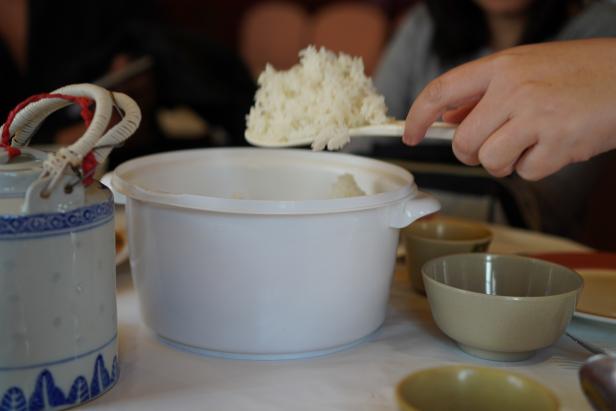
Penpak Ngamsathain/Getty Images
What Are the Benefits of Using a Rice Cooker?
Perfect Rice: A pot of fragrant rice is undoubtedly the biggest perk of using a rice cooker (the aroma is so distinct, one company has even turned it into a candle).
Reliability and Consistency: Even better, there’s no need to stand at the stove, constantly peeking into the pot and worrying about it boiling over the moment you step away.
Make Ahead Potential: Some come with a warming feature that not only keeps the grains at a safe temperature, but also makes prepping rice ahead of time easy, too.
Doesn’t Take Up Stove Space: Plus, it keeps a burner free for cooking other dishes.
Can Cook and Steam Other Foods, Too: Despite its name, a rice cooker is so much more than a one-trick pony. It can cook many foods beyond rice, from other grains like barley and oats to beans and even cakes and breads. Many rice cookers can also double as steamers, so you can quickly heat up tofu, veggies, or fish.
How to Use a Rice Cooker, Step-By-Step
Step 1: Rinse the rice. Wash and drain the rice in cold water, repeating at least two more times until the water is clear. This helps remove excess starch, so the grains remain separate. During the final rinse, drain as much of the water as possible.
Step 2: Add water. Place the rice into the inner cooking pot and pour in water. You can either use the markings inside the pot that match the corresponding amount of rice (i.e. 3 cups) or use the recommended water-to-rice ratio (for white rice, that’s 1 to 1).
Step 3: Start the rice cooker. Put the inner cooking pot into the rice cooker. Close the lid, then press the start button.
Step 4: Fluff the rice. Once the rice is ready, indicated by the machine, open the lid and fluff the rice using a rice paddle or wooden spatula.
Step 5: Clean the rice cooker pot. Scoop out the rice. If you don’t plan on washing the inner cooking pot right away, soak it in some water so any remaining grains will loosen. Clean with a soft sponge with a mild dish soap. Most rice cooker pots are made with a nonstick coating so it’s best to avoid abrasive sponges and cleansers. Use a kitchen towel to dry the pot and let it air dry for a few hours or until next use.
Ratios for Rice Cooker
When it comes to cooking rice in a rice cooker, using the correct amount of water is key to achieving that perfect, fluffy texture. As a general rule of thumb, the recommended water-to-rice ratio is usually 1:1. This applies to white rice of any grain size (short, medium or long). Brown rice requires more liquid (2:1 water-to-rice ratio) and a longer cooking time. This is due to its outer bran shell, which also gives brown rice its chewier consistency.
It’s important to remember that these ratios are recommendations, not rules. Depending on whether you like your rice soft or firm, you may want to use more or less water. Like so much of cooking, it may take some experimenting to find a ratio that yields a perfect pot of rice for you and your family.
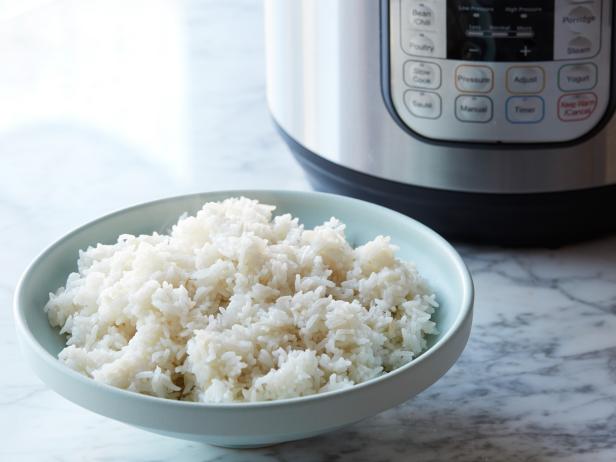
Matt Armendariz
Can You Use an Instant Pot to Cook Rice Like a Rice Cooker?
An Instant Pot can definitely pull double duty as a rice cooker. In fact, many home cooks love using their Instant Pot for cooking rice because it's so versatile. However, using an Instant Pot to cook rice isn’t quite as straightforward as a rice cooker. That’s because getting perfect rice in an Instant Pot requires you to program a specific cooking time, whereas a rice cooker has sensors that automatically knows when the rice is done. While Instant Pot does have a “Rice” function, it’s gotten mixed reviews—we recommend following a trusted recipe, such as the Food Network Kitchen one pictured above, so you know the rice will come out nice and fluffy.
Related Links:
























